Flesh and Blood is a game built on choices, right down to its very core principles. Most cards can be used for 3 purposes- to play it as it was intended, to pitch it for resources, or to block with it- and so we begin at this fundamental level with choices. Which cards should we utilize during our attack? Which should be sacrificed to keep our life total up? If I pitch this card, am I improving my late game? Or am I taking value now at the expense of my late-game lethality?
These evaluations must be made with each and every hand, and the correct answer depends not only on the deck you're playing, but also on the one you're facing. It's no wonder players pursue metrics and rules of thumb; that they hone their decks to do one thing so well, they need not consider the others.
Take a look at some recently popular decks, and you'll find this idealization of consistency, of play patterns and routines.

Fai is often played as a straight aggro deck- blocking is seldom considered, and the cards reward that with compounding damage that should out-pace any damage you may have received in return. Will Reinhardt recently evaluated Fai's exponential value, and it clearly supports this approach: reduce decisions, play through your patterns, and get reliable results.
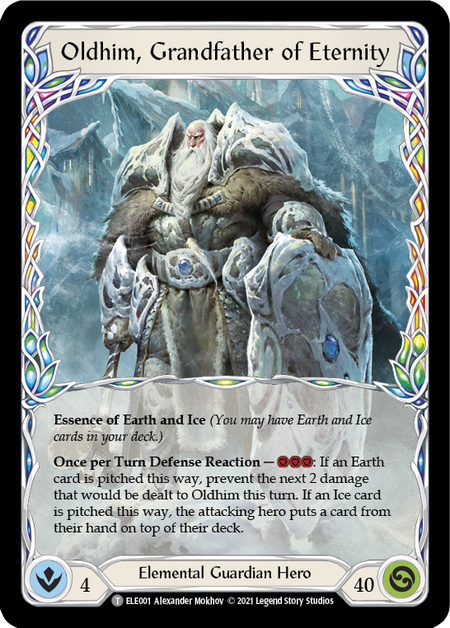
On the other end of the spectrum, Oldhim stands resolute against assault, ready to block out anything that comes his way. The typical Oldhim build needs only a blue Ice card to pitch for his Winter's Wail; all other cards are primarily used in service of defense, wearing down the opponent across a long game. Drew Cordell wrote an extensive Pro Series on Oldhim, and through dozens of refinements continued to find that a default defensive stance was the best strategy. Again, the decisions are easy, the patterns predictable, and the results reliable.
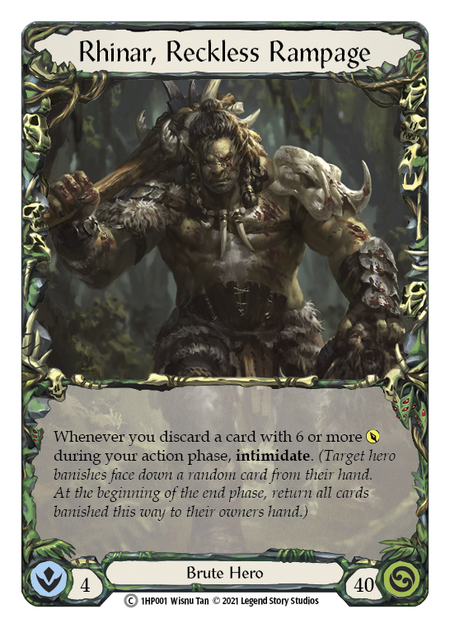
The inverse is also a competitive value: reduce your opponent's options, and you can anticipate your outcomes. Take Rhinar, who epitomizes this with the Brute-unique Intimidate keyword. With stacked Intimidate effects, you can set aside most of an opponent's hand while they face down your attack, leaving them without the option of choosing their least valuable card to block with. This strategy is so core to Brute that it even works at the Commoner level, as illustrated by Tommy Mains.
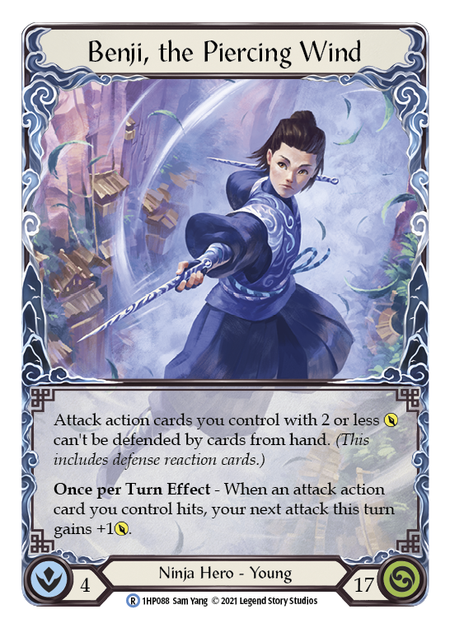
And in Blitz, we've seen the damage that can be done when you eliminate the option to block. After receiving his specialization- Spring Tidings- Benji enjoyed a brief stint as a competitive hero by sticking to low-damage attacks while forming impossibly long combat chains.
But it's here that we're most undeniably confronted with the breaking point of this idealization of limiting choices. I've written in the past about the Benji trap- our tendency to focus on what a hero does well without considering their weaknesses- and Benji's short tenure at the top of the Blitz meta proves the point. If you never give your opponent a choice, you must count on your deck to execute its lethal gameplay at full stream ahead before theirs does. And you may not be up to the task.
Forcing a Choice
Pit two racing aggro decks against one another, and you'll find out quickly which can get their enemy to zero the fastest. At a certain point, one of them will be forced to awkwardly fall into a partial- or even full- defensive position, a role it wasn't built for and can't possibly sustain. The game is lost at this point; it's not a choice to defend, but a necessity, and in its own way also a concession of defeat.
But suppose one of those decks was an Ice Lexi, built on a wide Voltaire strategy. Lexi opens her turn with a fused Blizzard Bolt and go again.
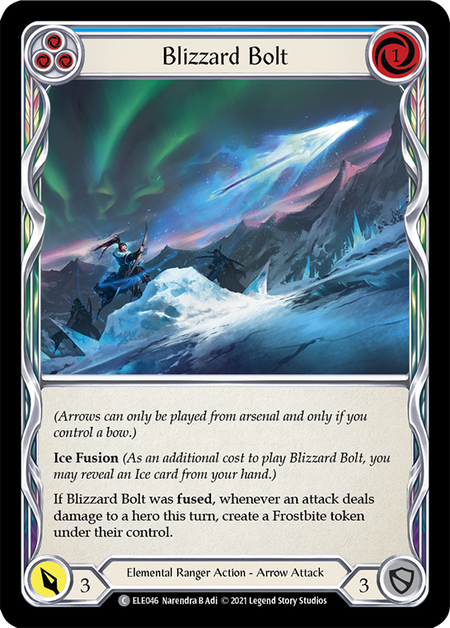
Now the opponent has a decision to make. Letting the attack hit will mean Frostbite, so at least one of their cards will now have to be used as pitch. Do they block it, saving the damage and the ice tax? It's a 3, so a single card can block fully- but what if Lexi climbs over the top of that block? Now they've lost a card to defending and still have to pitch for their next turn.
By giving them a choice, Lexi has now thrown off the rote gameplan they'd intended to follow, and reduced their honed efficiency.
Let's tackle another example. You're playing Dromai in a matchup against Fai- an aggro deck that intends to attack you from 4-cards hands every turn. But you just drew Invoke Kyloria, and have a nice big pile of Ash ready to fuel your next turn. You take a turn off defending to come into your turn with a red Invoke, followed by Rake the Embers, and are now threatening with 3 Ashwings and Kyloria. You also have a red Dunebreaker Cenipai in hand, with 1 resource floating.
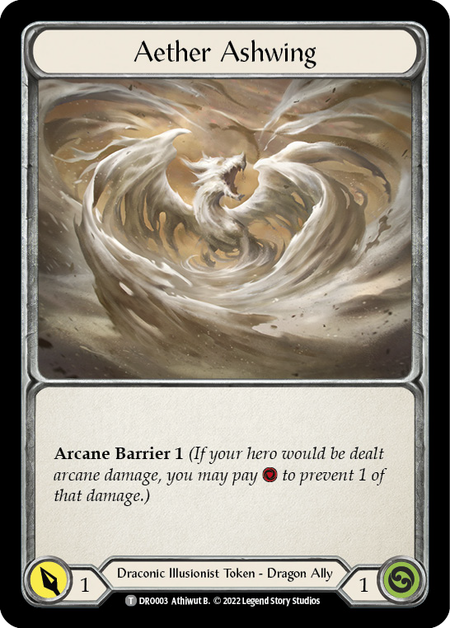
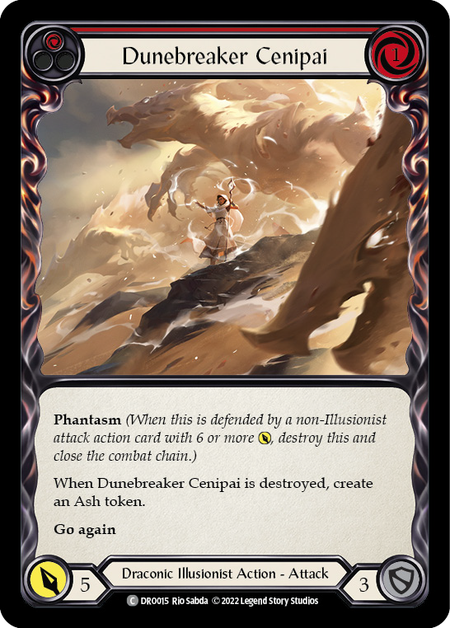
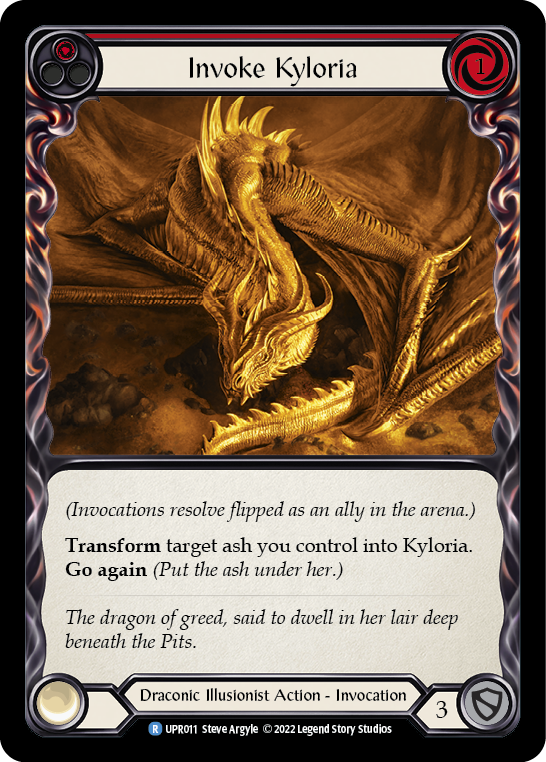
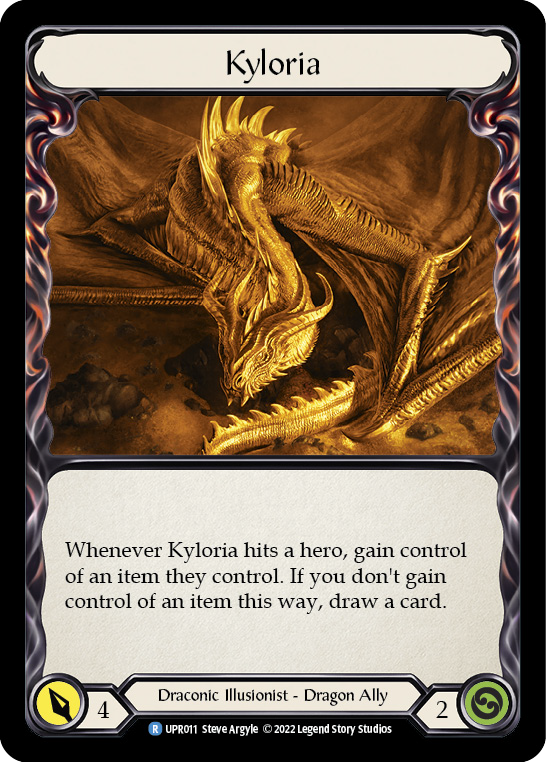
The Illusionist class is incredibly apt at presenting choices your opponent must make, and because of her allies, this is especially true of Dromai. With each dragon you invoke, your opponent must decide whether to waste attacks on destroying it, or to simply out-race the damage (and effects) it threatens if given multiple turns on the board.
Let's say the defending opponent actually has a card capable of popping phantasm in hand: a Command and Conquer they would have liked to end their turn with. If Dromai now leads with an Ashwing, the opponent has to consider the following:
- Should I destroy the Ashwing with a defending C&C, ending the chain before it begins?
- Should I let the Ashwing hit and hold my phantasm popper for when Dromai attacks with Kyloria?
- Should I hold out to see what that last card in hand can do?
- Should I stick to my aggressive gameplan and hold C&C to attack on my own turn with?
It's easy to focus on the bad when a phantasm attack gets popped, but look at what we gained:
- If they pop the first Ashwing, we built a board state of 3 dragons and pulled a high-value attack from the opponent's hand.
- If they hold through the Ashwing assault and pop Kyloria, we dealt 3 damage, built a 3-dragon board state, and pulled a high-value attack from the opponent's hand.
And if you change your sequencing, you can introduce even more choices. Attack with the 3 Ashwings, then choose to slam Dunebreaker from hand before hitting Kyloria. Now you've forced them to reconsider: holding that card to pop Kyloria now costs them 8 damage, not 5. (And you may not even attack with him!)
Hidden Information
The impact of a decision point is built on the foundation of hidden information. In this game, you must often make decisions without complete knowledge of what you're dealing with.
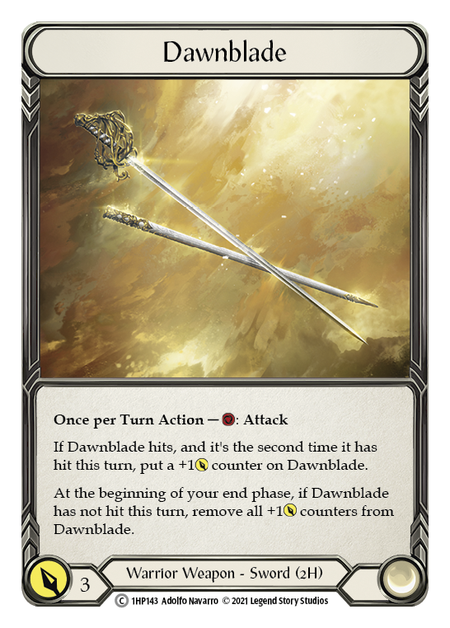
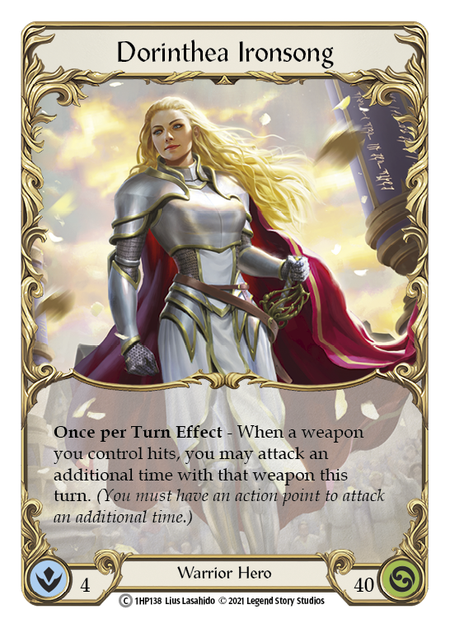
Dorinthea epitomizes the impact of the unknown. When she attacks, she's often showing you only 1 or 2 elements of the attack: the Dawnblade, and perhaps a non-attack action that gave it go again. How do you block that effectively? Do you even bother? Her strongest reactions are locked behind reprise, which looks for a defense played from hand; but if you just let the weapon hit, you'll be facing a second attack too. There's a reason Rout has the reputation it does.

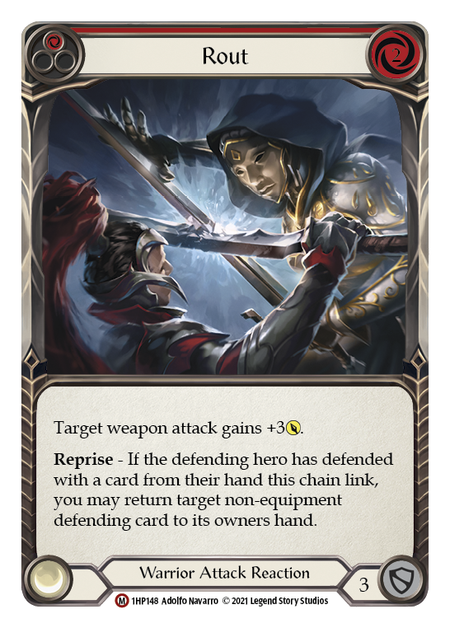
The best thing about hidden information is that one card can simultaneously impact your opponent's decisions as if it had several cards' worth of effects. Whenever Bravo attacks with two resources floating, the opponent assumes your arsenal holds a Pummel. You literally don't need the card in your deck to have its existence impact the opponent's decisions!
For this reason, a single copy of a card can be incredibly valuable. The moment you drop a Pummel on your opponent, they assume 2 more in the deck, and will play all future defenses as if you may climb over the top and strip a card from their hand.
The value of hidden information is immense, so absolutely don't give away more info than you have to! Things like changing your tone when you play the last action of your turn- "and a Snatch for 4"- or having a habit of setting down your hand (except when you're holding an attack reaction) can make your opponent's decisions easier for them.
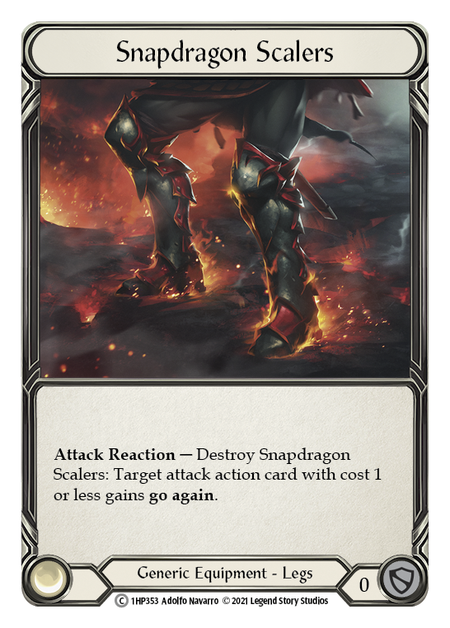

But counterintuitively, the inverse is also true: you can make their choices harder by pointing out that your Snapdragon Scalers are still available, or that you're floating a resource. The less you have routine behaviors, the better- so add all of them to your repertoire and keep them guessing!
Getting in their Head
Sometimes, your opponent will make the wrong choice and completely trip up their game. But more often, your opponent will make a decent choice. To make the most of a strategy built on forcing your opponent to make decisions, you want to make sure they feel like they're bad choices anyway.
Dromai continues to provide a useful illustration. Whenever she has dragons on the field, the opponent needs to consider whether their attacks should target her or her allies. Notably, Dromai can't defend her dragons; any attack into them removes choices, and in doing so leaves Dromai with more cards in hand for the next turn. As long as they aren't removing a legendary dragon, this two-turn exchange is incredibly hard for an opponent to come away from feeling good about.
Essentially, you're forcing decision fatigue on them over the course of a game. You've heard players talk about the additional difficulty that comes from playing a complex deck at a major event. When you continue to push hard decisions on an opponent, you're signing them up for a more mentally taxing game than they'd intended to play.
When you pursue a linear strategy that aims to remove opportunities for your opponent to make choices, they'll be inclined to blame a loss on card draws and RNG. But follow a branching gameplan where your opponent's choices impact how you proceed, and they'll be inclined to blame themselves and their choices for the loss. The last time I played Dromai in a tournament, 2 of my opponents came away from the event blaming one turn's choice for the loss. They hadn't made a bad choice- I simply had plans for either outcome- but their feeling that way gave me power moving forward.
This has incredible value in a recurring-playgroup environment, such as your local Armory, because the inroads you make in your psychological game can pay dividends across many matchups. A 2nd round may encourage them to try to play differently to gain a different result; or they may modify their deck to counter yours, at the cost of their deck's well-rounded efficiency. If nothing else, you add to the narrative that you are a strong player who can't be out-played.
Background music is Afternoon Nap; Midnight Stroll; Morning Routine by Ghostrifter Official | Music promoted by Chosic | Creative Commons CC BY-SA 3.0






